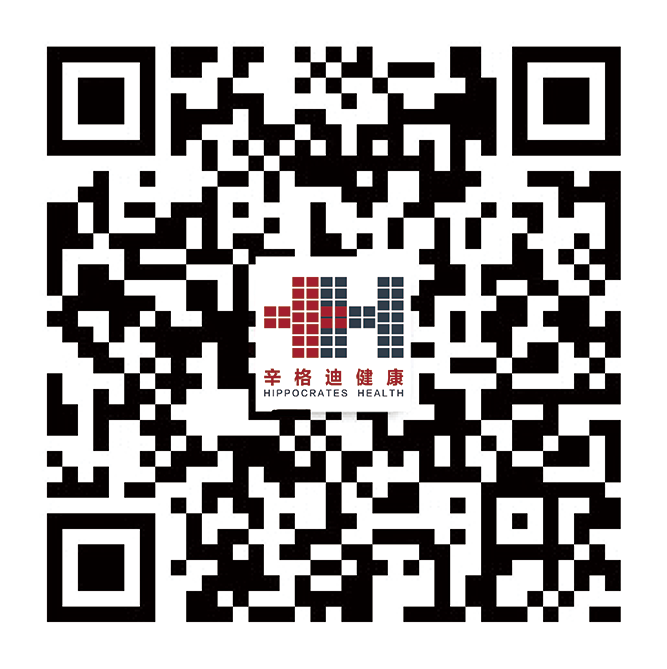GMP Document Management (DMS) Project of Shanghai SPH Xinyi Pharmaceutical Co., Ltd.
I. Case Enterprise
In the landscape of China's pharmaceutical industry, Shanghai SPH Xinyi Pharmaceutical Co., Ltd. shines like a bright pearl with unique charm. Founded in 1916, this century-old pharmaceutical enterprise has weathered the vicissitudes of time, accumulating profound experience in pharmaceutical R&D, production, and sales. It holds nearly 1,000 product approvals, and its integrated manufacturing bases boast an annual production capacity of 13 billion tablets. Its business scope covers 14 major therapeutic areas, including digestion, respiration, and cardiovascular diseases, occupying a pivotal position in China's domestic pharmaceutical industry. Its star products such as Bifico and salbutamol inhalation series have won deep trust and recognition from a large number of patients.
However, with the rapid development of the times, the regulatory requirements for China's domestic pharmaceutical industry have become increasingly stringent, imposing higher standards on the authenticity and traceability of data throughout the entire life cycle of pharmaceuticals, from R&D to production. Against this backdrop, even industry leaders like SPH Xinyi have clearly recognized that traditional management models can no longer meet the needs of the enterprise's future development. To maintain its leading position in the fierce market competition and ensure high standards of pharmaceutical quality, SPH Xinyi resolutely embarked on the journey of digital transformation, and the GMP Document Management (DMS) Project is the core initiative of this transformation.
II. Severe Difficulties in Traditional Management
Before embarking on digital transformation, SPH Xinyi had long relied on the traditional "paper documents + manual management" model. This model supported the enterprise's daily operations for a long time. However, with the continuous expansion of the enterprise's scale, the increasing complexity of its business, and the rising regulatory requirements, the drawbacks of the traditional management model have gradually become prominent.
In the process of document circulation and approval, the inefficiency issue was particularly acute. A document, from drafting to final approval, often needed to be transferred back and forth among multiple departments, consuming a great deal of time and effort. Due to the lack of an effective tracking mechanism, documents frequently experienced delays, losses, and other problems during circulation, resulting in lengthy approval cycles that seriously hindered work progress. Moreover, the manual filling and signature methods for paper documents not only made writing errors more likely but also made it difficult to ensure the authenticity and validity of signatures.
In terms of costs, the traditional management model also imposed a heavy burden on the enterprise. A large number of documents required printing, binding, and archiving, which not only consumed substantial office supplies such as paper and ink cartridges but also occupied valuable storage space. According to incomplete statistics, SPH Xinyi spent hundreds of thousands of yuan annually on paper for document management, and the cost of leasing storage space was also considerable. In addition, manual document management required dedicated personnel, which further increased the enterprise's labor costs.
When document content needed to be revised, the recovery and destruction of old document versions became an arduous task. Due to the inability to grasp the distribution of documents in real time, it was difficult to ensure that all old document versions were retrieved promptly. This led to the risk that employees might use outdated documents during the production process, thereby posing potential risks to pharmaceutical quality. During an internal audit, SPH Xinyi discovered that some employees were still using outdated production operating procedures—a situation that attracted great attention from the enterprise's management.
These problems, like heavy shackles, severely restricted the development of SPH Xinyi. There was an urgent need to introduce a new management model to break this dilemma.
III The Way to Break the Dilemma: Hippocrates GMP Document Management System
To completely break the predicament of traditional management, SPH Xinyi, after careful consideration and extensive research, decided to introduce the GMP Document Management (DMS) System developed by Shanghai Singdi Health Technology Co., Ltd. This project, like a timely rain, brought new management concepts and technical means to SPH Xinyi, promising to fundamentally solve the various problems in document management.
(1) Overall Planning and Phased Implementation
The project adopted a strategy of "overall planning and phased implementation," divided into two phases.
- Phase 1 focused on building a basic document management system that meets regulatory requirements and establishing an efficient communication and collaboration mechanism among various departments. This is analogous to laying the foundation of a high-rise building—only with a solid foundation can subsequent construction proceed smoothly. Through the construction in this phase, SPH Xinyi initially achieved standardized document management, laying a solid foundation for subsequent digital upgrading.
- Phase 2 focused on realizing full digitalization of document management and completing the life cycle document system management of pharmaceuticals from R&D to commercialization. This means that throughout the entire life cycle of a pharmaceutical—from the initial R&D concept, to clinical trials, manufacturing, quality testing, and finally to market sales—all relevant documents will be incorporated into the scope of digital management. This ensures that the enterprise's document system fully meets regulatory requirements while improving the enterprise's internal management efficiency and collaboration capabilities.
(2) Innovative Business Model Covering the Entire Process
In terms of the business model, the DMS Project was also divided into two phases.
- Phase 1 mainly targeted document management for the production and quality systems. It comprehensively sorted out and digitally managed various documents in the pharmaceutical production process, such as production operating procedures, quality standards, and inspection reports. Through the implementation of this phase, the accuracy, timeliness, and traceability of documents in the production and quality systems were effectively improved, ensuring that the production process was strictly carried out in accordance with standards, thereby enhancing product quality.
- Phase 2 focused on completing the construction of document management for the R&D system. R&D is the core competitiveness of a pharmaceutical enterprise, and effective management of R&D documents is crucial. This phase involved the digital integration of experimental data, research reports, patent documents, and other materials during the R&D process, realizing efficient sharing and collaborative work of R&D documents, accelerating the R&D process, and providing strong support for the enterprise's innovative development.
(3) Strong Technical Architecture Empowering Efficient Management
The GMP Document Management System (DMS) is one of the core products of Singdi Aotai Digital Platform. The Aotai Platform was jointly developed by industry experts and IT experts, with "quality compliance expert" as its management concept and market positioning, providing comprehensive support for enterprises.
The platform features a high degree of customization. Its built-in configuration tools cover multiple quality management functions, allowing enterprises to customize quality systems according to their needs without complex customization or programming. Personnel who have received simple training can quickly customize forms, decision trees, and dashboards to meet specific business needs, greatly improving the adaptability and flexibility of the system.
In terms of data access, the Aotai Platform is excellently designed to ensure that users can quickly access large-volume records and data. The "intelligent loading" function of forms minimizes loading time, while frequently used data is cached to effectively improve network bandwidth utilization. Its distributed architecture is optimized for server expansion, and standard APIs are used to improve system access efficiency, allowing users to experience smooth and efficient operation during use.
Furthermore, the platform integrates functions such as automatic email notifications, SMS notifications, and dashboard alerts into the workflow, greatly reducing the risk of users missing tasks or approvals. In terms of background task submission and management mode, it supports users to perform other tasks simultaneously and provides a standard intermediate service layer to facilitate integration with third-party systems and realize data exchange, further enhancing the overall information management level of the enterprise.
VI Remarkable Results: Becoming an Industry Benchmark
(1) Significant Improvement in Enterprise Benefits
After 4 months of intensive implementation, the DMS Project achieved remarkable results at Shanghai SPH Xinyi Pharmaceutical Co., Ltd.
In terms of comprehensive labor efficiency, data statistics became real-time, accurate, and reliable, with a speed increase of 80%. This significant change enabled the enterprise to make scientific decisions based on data more quickly, greatly improving the timeliness and accuracy of decision-making. Meanwhile, after the completion of Phase 1 of the project, relevant statistical positions were eliminated, and the number of new recruits was reduced by approximately 20%. As the number of users of the project gradually covered all employees, the effect of labor cost savings became increasingly prominent, and the enterprise's operational efficiency was greatly improved.
In terms of quality improvement, the informatized traceability of product quality reached over 90%. This means that in every link of pharmaceutical production—from the procurement of raw materials, to each process in production, to the quality inspection of finished products, and finally to the delivery of products—all information can be accurately traced. Once a quality problem arises, the source of the problem can be quickly identified, and timely measures can be taken to address it, effectively reducing quality risks. The consistency and integrity of data were also enhanced by 100%. With the realization of online monitoring and real-time early warning functions, the average level of online quality control was improved by 1-3%, and the efficiency of PQR (Product Quality Review) analysis was increased by more than 20%, strongly ensuring the stability and reliability of product quality.
In terms of error reduction, the project also achieved outstanding results. Statistical errors were eliminated by over 90%, and human errors were eliminated by over 80%, greatly improving the accuracy of data and the reliability of work. In terms of document and record management efficiency, the document conversion and approval process were significantly optimized, with the approval speed increased by approximately 30%. More than 70% of batch production records, auxiliary records, post documents, and other materials were digitized, which not only improved the efficiency of document storage and retrieval but also reduced the complexity of document management. The cost of document and record printing and related consumables was reduced by approximately 80%, and the time spent on filling out records and documents was reduced by more than 50%, effectively lowering the enterprise's operational costs.
The training efficiency also underwent tremendous changes due to the DMS Project. After training and assessment were shifted online, the total time for training organization was reduced by approximately 60%, greatly shortening the training cycle and improving training efficiency. The time for training effect statistics was reduced by at least 80%, enabling faster evaluation of training effects and providing strong support for the adjustment of subsequent training plans. The effectiveness of on-the-job training was improved by approximately 40%, allowing employees to master the required knowledge and skills more efficiently, thus providing a more solid talent support for the enterprise's development.
(2) Profound Social Impact
Quality is the lifeline of pharmaceutical enterprises and the cornerstone of their survival and development. Against the backdrop of increasingly fierce competition in the pharmaceutical industry, more and more pharmaceutical enterprises have begun to recognize the importance of digital quality compliance management systems and have successively implemented such systems to prevent and avoid quality and safety incidents. Digital management has become the mainstream trend in the development of pharmaceutical enterprises. The DMS Project implemented by Shanghai SPH Xinyi Pharmaceutical Co., Ltd. has undoubtedly taken the lead in the industry.
By implementing Singdi's GMP quality compliance digital solution, SPH Xinyi has realized a two-way overall supervision of the quality management system, from top to bottom and from bottom to top. This innovative initiative not only provides a strong driving force for the enterprise's own development but also offers a new idea for domestic pharmaceutical enterprises to improve their GMP management levels through digital technology. Its successful experience has set an example for other enterprises in the industry, encouraging more enterprises to actively engage in the wave of digital transformation, jointly promoting the high-quality development of China's pharmaceutical industry, and contributing to ensuring the safety of public drug use.
V Related Solutions
- Solution 1: Hippocrates GMP Document Management System (DMS)
- Solution 2: Hippocrates GMP Training Management System (TMS)



